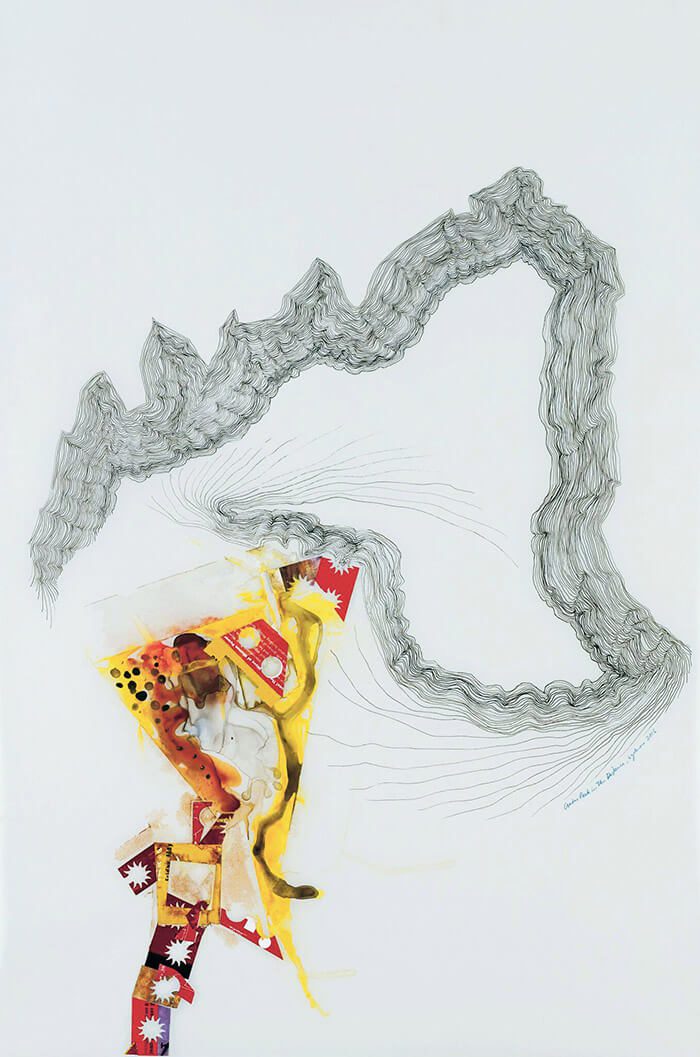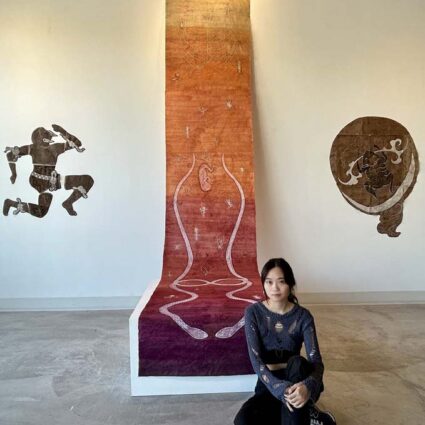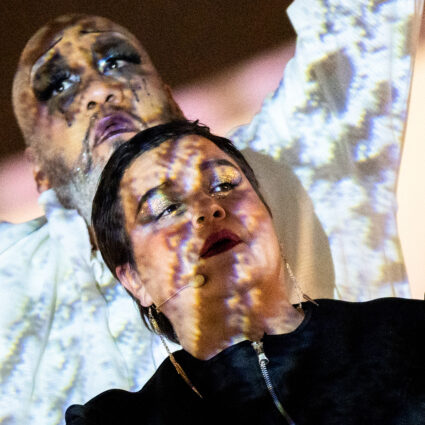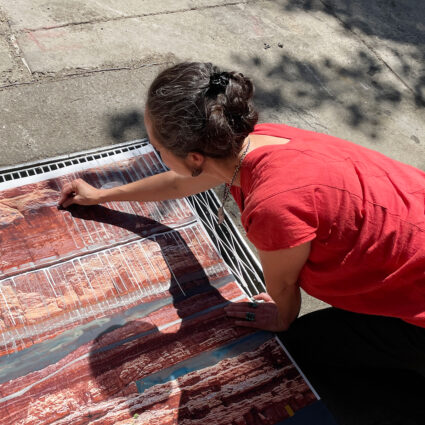
New Mexico Museum of Art, Santa Fe, NM
Through December 4, 2016
Al-qobbah, “the vaulted chamber,” a recessed space, within a room or without, like a bower. “Alcove” has many applications, and the New Mexico Museum of Art has one of the best of them. The NMMA Alcoves 16/17 exhibition series comprises seven small group shows, each featuring five New Mexico artists and running for five weeks. The yearlong cycle of Alcoves exhibitions runs through March 2017. The current show, #5, is on view through December 4, with the opening of #6 on December 11.
The Alcoves series provides thirty-five local artists with an opportunity that is virtually out of reach of most artists who seek to establish themselves: a major venue for their art, accessible to a wide audience. The NMMA series—“artist-centered showcases [that] feature new ideas, artists at all stages of their careers and artwork that is being made in New Mexico right now” (nmartmuseum.org)—reprises the Museum’s original format of one-person exhibitions begun in the 1950s, resumed in the 1980s and 1990s, and again revived in 2012. But what is remarkable is that the Museum of New Mexico, now the NMMA, was founded precisely to feature then-contemporary artwork by local artists, as well as by outside artists encouraged to experience the local landscape and culture. And paint it: artwork by many of these early émigrés is now a core part of the Museum’s permanent collection. A case in point is the adjacent exhibition, Southwestern Sampler, featuring artists from the permanent collection dating back to 1917, virtually all of whom came as visitors from other parts of the nation at the turn of the century, many of whom would settle in New Mexico to become leading figures in the Taos Society of Artists and the Santa Fe art colony.
Alcoves 16/17 #5 features collages by Mira Burack, etchings by Kelly Eckel, drawings and papier-mâché collages by Shaun Gilmore, watercolors by Dara Mark, and textured line drawings by Signe Stuart. The row of five small gallery spaces allows the viewers to engage each body of work separately and at the same time as part of an organic whole. Here the emphasis is indeed on organic: the imagery of all the artists has a common reference to nature—whether by evocation or by intimation. The works-on-paper focus lends itself to the intimacy of the space and the contemplative mood evoked by a quiet encounter with nature.
Mira Burak’s Laundry Piles I (2010) is a placid pinwheel collage of pigment print cutouts layered in concentric circles like ordered leaves on a forest floor. The silvan slippers of Kelly Eckel’s photo polymer etchings (Morphogenic Series, 2014) are a seamless irregular patchwork of feathers, bark, microbes, flora and fauna patterns. Dora Mark’s Elegy #15/Angel of Absence (watercolor on translucent polypropylene, 2014) floats like a limpid pond, host to fluid, translucent forms that play beneath its serene surface. Signe Stuart has developed a personal string theory with Strux 2 (Japanese unryu paper with acrylic yellow oxide, 2016). Its thickly textured lines of acrylic yellow oxide crisscross to form a taut fabric schema in which parallel diagonal lines, connected and held on course in the interstices by a series of wild webs, span the width of the surface.
The row of five small gallery spaces allows the viewers to engage each body of work separately and at the same time as part of an organic whole.
The harmony of each artist’s sensibility to nature and a shared organic approach to form is assured by the high quality of the show’s curation by Kate Ware, curator of photography, beginning in the first place with the selection of these artists. The exception does indeed prove the rule: if the elegantly erratic lines of the poked fractal form of Shaun Gilmore’s Crater Peak in the Distance (acrylic and archival ink on vellum) accords with the show’s abstract fantasia on themes from nature, Gilmore’s hanging clusters of trinkets and gangly collages of papier-mâché floor pieces crash the party, conjuring everything from festive calavera debris to a kitsch-bent shower curtain. The effect is akin to rounding a health food aisle of gluten-free cuisine to confront a snack display at 7-Eleven. Yet these willfully discordant notes have the curious effect of affirming the show’s serene homage to nature.



